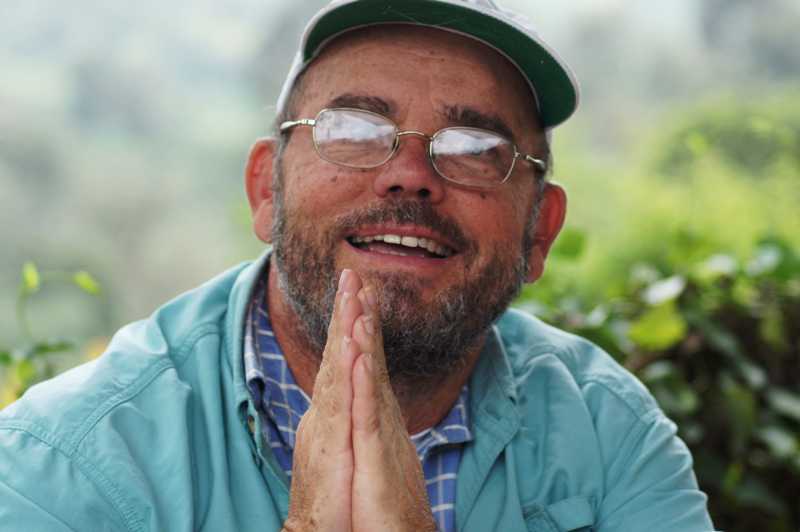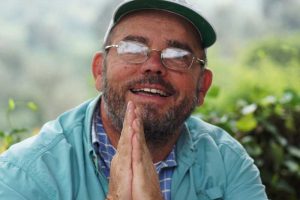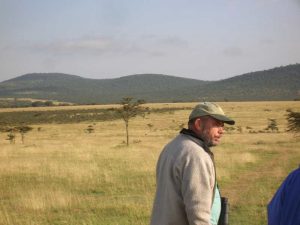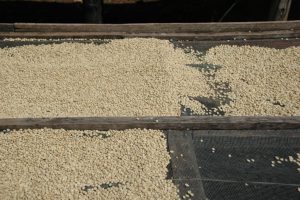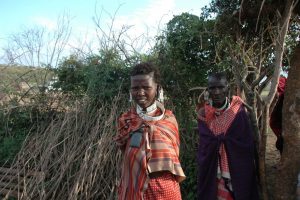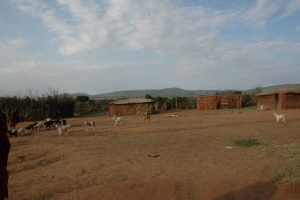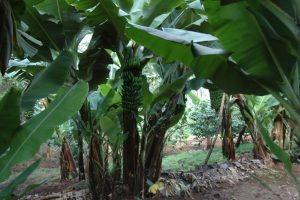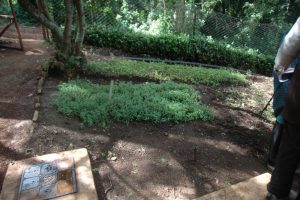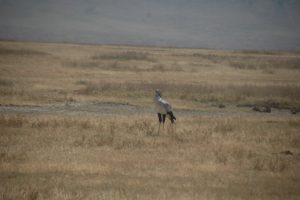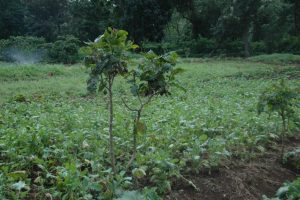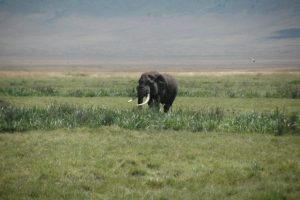Tu B’Av 2012
The Certainty of Hope
Africa Trip,Tu B’av, and the Theology of Blaise Pascal
When is hope, hope against the odds?
And, when is it hope with the odds?
When is hope unexpected?
And, when is it certain?
Tu B’av comes after the “three weeks” of rest and reflection and the fast day of Tisha B’av in The Jewish/Christian Christian/Jewish calendar.
Torah is not read or studied during Tisha B’av.
Some prayer questions, “Where do you come from?”
“Where have you been?”
Then the periods of joy (weddings and music are allowed and the Torah and the Prophets not studied) During this time, in order to better observe these three weeks of rest and reflection, we are not supposed to enjoy music, have our hair cut and a few other such helpful observances as outlined in the oral law (Talmud).
When we start back our weekly Torah studies with the beginnings of readings from the Book of Deuteronomy (1) Devarim…These are the words that Moses addressed to all Israel, 2) V’etchanan…And, now give heed , 3) Ekev…when the Lord your God brings you to the land, 4)Re’eh..See that you!, 5) Shofetim…Appoint Judges for your tribes, and 6)Ki Tetze…When you take the field against your enemies, and 7)Ki Tavo…when you enter the land). And, also we are beginning the “seven weeks” of beautiful corresponding prophetic readings of Haftarah of consolation from the book of Isaiah
(Isaiah 1:1-27,Isaiah 40: 1-26,Isaiah 49:14- 51:3,Isaiah 54:11-55:5,Isaiah 51:12-52:12,Isaiah 54:1-10,Isaiah 60:1-22).
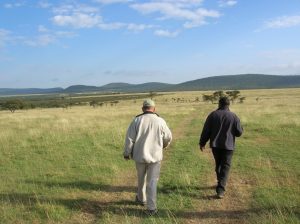
“I come from a long dusty road, and walking along with you.”
Also, at this time, we will be praying with cultureofpeace.org and many other people around the world on the international day of Peace celebration September 23.
I would also especially like to thank and pray for God’s blessings for some of our faithful prayer partners this year and on the trip: Scott and Rhonda Gibson of Gordon-Conwell Seminary in Massachusetts Dr. Margarette Johnson of Nashville, TN and also FAME (The Foundation for African Medicine and Education) located in Karatu, Tanzania. She was our medical doctor on call for our Vanderbilt Alumni Trip and Safari to Africa
My cousins Jonathan and Tina Harrell of Granada Hills, CA
Mark Beakley of Vicksburg,MS
Lynne Brown of Unity School of Christianity in Unity, Missouri,USA
Kevin Cason now of the Himalayas, Tibet
Shanti Corrigan and Amb. Martin Brennan (Ret.) of International House, Berkeley, CA
Dr. James Hudnut-Beumler and Kitty Norton Jones of Vanderbilt Divinity School
Mr. Pascali Madangi of Gibb’s farm near Karatu,Arusha Tanzania
“Where have you been?”
“Where I have been, there is an end in a beginning and
a beginning in an end”
Figure 1 Three photos of myself by Dr. Margareete Johnson. Two with Thomson Safari guide John, that was taken in the high savannah, of the Thomson Northern Serengeti Wildlife Preserve. And the other I believe one was taken by the nyumbas[tents] in the Central Serengeti National Tanzanian Wildlife Preserve.
There are more photos of this trip by my fellow traveller’s posted on the News from Vicksburg,MS blog
The photos of the vegetables below are from the Gibb’s Farm, Karatu,Tanzania Vegetable Garden, and from a tour of the garden Mr. Mangadi gave our group. Thanks to him for the tour, and I have forwarded him a copy of the Great Books volume 33 on Blaise Pascal with some of my notations.
Figure 2 Drying coffee at Gibb’s Farm, Karata, Tanzania. Gibb’s farm makes an arabica, sweet farm house roast coffee that is only sold locally. Arabica coffee is African coffee that was originally indigenous to Yemen.( Coffea arabica is believed to be the first species of coffee to be cultivated, being grown in southwest Arabia for well over 1,000 years. It is said to produce better coffee than the other major commercially grown coffee species http://www.wikepedia.org/)
One way hope is with the odds, expected, certain, is when it is mathematicial. The first theologian to figure out the details of this, to give definition to what had yet to be defined, was the French theologian, mathematician, scientist, Blaise Pascal
In the blog this month we will discuss and consider how to think about him as a theologian and a mathematician. As a mathematician we will discuss how Pascal proved his key theorem that justifies the use of his arithmetrical triangle to calculate probabilistic “expectations” [hopes] for the gamblers problem in the “game of points”. The solution to this problem was an important event in 17th century mathematics and allowed Pascal to create a new mathematical discipline called probability theory. The mathematican Blaise Pascal spent a good part of his life thinking about the scientific/theological question of how to define probability. Pascal got started as a theologian by defending the 17th century Dutch bishop Cornelius Jansen [Letters I and II].
The best reference to Pascal’s ideas are his own writings. See Volume 33 of Enc.Brit. Great Books, compiled by our former letter correspondent and prayer friend , public philosopher, and my uncle William Calohan’s teacher at U. of Chicago in the 1930s, Dr. Mortimer Adler. When I was doing my science fair project in Vicksburg, MS (and 10 or 11 years old) in the late 1950s I wrote Dr. Adler for information about the formula for relating temperature to cricket chirps. He was kind enough to answer my letter and send me 20 pages of information. 25 or so years later I had gotten a doctorate in Math and wrote him again about the mathematics and philosophy related to Zeno’s paradox and Plato’s Parmenides dialogue. I don’t know if he remembered me but he also answered the 2nd and more advanced letter. I noticed in the 1990s his son Isaac is now also a professional mathematician working and studying algebraic invariants. He gave a series of lectures at the the UC Berkeley mathematic’s institute above I-House and Strawberry Canyon, Berkeley/Oakland East Bay.
Bishop Jansen was trying to learn how to understand St. Augustine’s doctrines as compared against those of the Jesuits. Is God’s grace which He gives to all men, always sufficient unto itself [ie inside of all of us]? The Jesuit’s did not like Jansen’s theology because it followed John Calvin’s to some extent. One of Calvin’s five theological points was that the grace of God, once received, was sufficient and thus did not require the help of someone else, eg. a priest to enable it and make it effective. St. Augustine believed that this was impossible due to our original sin, the Jesuit’s said, “maybe not” but we are against any attack on the authority of the Church structure. The “maybe not” referred to here has to do with the theology of morals and the question of whether if as Aristotle said, “those who don’t know whether they are doing anything wrong actually are sinning”? ref. Great Books, volume 33[Letters III,IV,V]
If we say we “probably don’t know” what do we mean? Apparently, this started Pascal thinking about the question what do we mean when we use the word “probably”? How is hope defined differently than we define faith? Faith has to do with a reality in space and time that we find ourselves and so does hope. But, what is the difference between them? In general hope is usually more connected with natural causation and faith with subjective points of view. Depending on whether we say that mathematics is about reality (like Plato) or not (like some more modern philosophers) mathematics is connected to how we understand reality in space and time (in terms of natural causes) and how we understsand logical truth which can exist as a hope or faith outside of space and time. When talking about the theological arguments of some of the Jesuits when they tried to discredit the Protestant theologians of the time, Pascal says: “[It is] a very singular thing to save one man’s suffering, by imposing it on another”, he says [Letter VIII].
He sets forth three rules for ethics, 1)”the spirit of piety always prompts us to speak with sincerity and truthfulness; whereas malice and envy make use of falsehood and calumnity”, 2) “none may do the least evil in order to accomplish the greatest good” for “the truth of God stands in need of no lie”, 3) but it is not enough just to tell nothing but the truth, but “we must not speak that which can hurt, without doing any good”. He quotes Saint Augustine, “the wicked in persecuting the good, blindly follow the dictates of their passions, but the good are guided by a wise discretion.” And, he quotes Jesus’s words, “woe to the blind leaders, woe to the blind followers” against these arguments [Letter XI]. Even though He already knows the answer [who we are and where we are coming] God cannot help us until we tell Him the truth about it.
It is all related, also, to the more fundamental and ever-present theological question of whether Jesus Christ is already alive in us right now, as individuals living on our own apart from the Church, or yet to come? Does Jesus come inside of us all before the millennium or after it? And if not both ways, why not both ways? And on and on. The answer to this question determines how we plan and pray for heaven to exist inside of us and who if not ourselves as individuals, who is in control of God outside of us as individuals and also inside of us as unique persons, 1) It determines those who we anoint to run the Church, 2) those who we anoint to understand the Bible, or the Torah, or the Quran, or 3) and since the Church is a powerful controlling force in secular society it often determines also how to have money or power in the World we live in? Unfortunately the answer to this problem often gets lost while investigating its subtleties. Maybe to spite those people who didin’t take kindly to him declaring this question to often for discussion, Pascal turned his thinking toward how we can understand each other in different ways, how we can understand the theory of gambling odds mathematically, how we can measure temperature with an instrument, and how we can understand what the vacumn is scientifically. While doing this he became one of the more important scientists and mathematicians of that important century in the history of human enlightenment.
Figure 3 Young Masai Women The word Masai,, as told to me by the local Masai healer, means people who speak the “Ma”. Because the Masai language (although not written) is closer to Aramaic in its vowel and consonants sounds than the Greek, Sinai Egyptian, and Sanskrit Central and Eastern European language phoneme sounds. Some anthropologists (try googling “Masai language and people”) think the Masai may be a lost tribe of the nation of Israel. Their own knowledge of their people’s history, as told to me by the healer, only extends back to the 14th century when they were living in Northern Egypt then (around the city “Cairo” the name of which means “no rain” in translated into Masai.
Figure 4 Masai Boma , thorn fences to keep the goat herds in, family huts built from cow dung in which goats are also kept. The whole enclosure is one Masai family of about 45 descendents of one women.
Figure 5 Masai Warrior friends, we had long discussions with them, in the Serengeti High Savannah Thomson Reserve Area. In their hands are their hardwood throwing sticks, which are used to guard cattle Bows made locally with feathers and iron pointed tips are also used. The long, very sharp spears seem in movies and U-Tube videos which are used to kill lions were originally banned by the Germans and British. But, now that Tanzania is independent are also allowed again, I believe. The Masai warrior school is in the hills behind the picture.
In his essay “On Geometrical Demonstration (on the Geometrical Mind) included later in the Great Books volume Pascal explains his ideas about some fascinating theories of mathematical proof and definition. It is interesting to compare this essay on Pascal’s mathematical method of discovery and proof with Descartes, and later Poincare’s. But, that is a more difficult discussion. I will just mention some of his aphorisms and assertions here:
“We must give definition to the defined. [in order to discovery new truths]”
Rules for definition:
1) do not attempt to define any of those things so well known in themselves that we have no clearer terms to explain them by.
2) Do not leave undefined any terms that are at all obscure or ambiguous
3) Use in the definitions of terms only words perfectly well known or already explained.
Rules for axioms:
1) Do not fail to ask that each of the necessary principles be granted, however clear and evident it may be.
2) Ask only that perfectly self-evident things be granted as axioms 3) “Time is [defined as] the motion of a created thing”
“The three fundamental concepts of science and mathematics are:
1) motion
2) number *
3) space
*in relation to understand how to define number you might want to see our discussions on “How do we define the number one?” that are posted on the http://www.yhwhschofchrist.org/discussionboard Sciene and Religion directory. It focuses on the German Logician and Mathematician Gottfried Frege’s ideas of this, the history of the development of the modern computer, and how this question relates to epistemology and the question “What is the Concept of a Concept”.
The game of points studied by Fermat and Pascal consisted of a stake being made by both players, then a fair coin being flipped a number of times.
The stake goes to whichever player has a given number of heads or the most heads at the end of the flipping. If, at a certain point in the game [before the given number of points has been achieved by either player] they decide to quit and divide up winnings so far, the question comes up, “how is this to be done?”. Thus the game is an example of what is called nowadays a Bernoulli trial [the probability of the results of each flip are independent of the results that have gone before]. It is clear from the fact that their are only two possibilities for each throw that a given game of n points can only last for at most 2n throws. And, if, at a certain point in game it m out of 2n throws have already occured, then in order to figure out the solution to the problem as stated, it is only necessary to consider the possibilities and combinations of throws out to 2*(n-m) more throws.
After Fermat’s letter [see Great Books volume 33 reference] Pascal started thinking about if the game was analyzed during it course of play how to we define the probability for one player winning, considered what has happened up to that time.
In order to do this he formulated a tentative definition, later to be made more precise by Laplace: “The theory of chance consists in reducing all the events of the same kind to a certain number of cases equally possible, that is to say, to such as we may be equally undecided about in regard to their existence, and in determining the number of cases favorable to the event whose probability is sought. The ratio of this number to that of all the cases possible is the measure of this probability, which is thus simply a fraction whose numerator is the number of favorable cases and whose denominator is the number of all the cases possible.” — Pierre-Simon Laplace,
A Philosophical Essay on Probabilities
Certain rules were postulated around this time by mathematicians studying in this area (or assumed) as to how to calculate “probabilities p(E) of an event E”
1) for all events 0 < p(E) < 1
2) p(impossible events) = 0. p(certain events)=1
3) p( not an event happening)= 1- p(E)
4) If two events, A,B are disjoint in occurence: p(A or B)= p(A) + p(B)
5) If two events A,B are with independently determined outcomes, but But successive results of the same experiments p(A then B) =p(A and B)= p(A)*p(B) In order to determine the ratio of favorable possible outcomes to unfavorable at a particular point in the analysis of the partial results of the complete results
Pascal computed a lot of the values of what we now call, due to Newton I believe, binomial coefficients[ because they are the coefficients of the expansion of the powers a binomial function (a + b)^n [(a+b) raised to the power n] = sum of terms k=1 to n (n k) a^k*b^(n-k) (. If you think about it in terms of how the powers of a^k*b^(n-l) you will understand that these coefficients count the number of ways of picking k objects out of a set of n. In the course of doing this he discovered the important step by step relationship which allows us to compute a table of the values of these coefficients for a given n, assuming we already know what the coefficients are for the case of n-1.
Figure 6 Velvet Monkey
Pascal’s algorithm to compute his famous arithmetic triangle which can be used to compute binomial coefficients First of all, by the definition of the binomial coefficients in terms of combinations of k objects picked out of n we know they have the property that the number is (k n)=n* (n-1)..(n-k+1)/k*(k-1)…1
In Pascal’s paper he wrote his triangle rotated 45 degrees. But, in order to understand If in relation to the binomial coefficients lets start out with it in the form
1
1 1
1 2 1
1 3 3 1
1 4 6 4 1
It is defined inductively using the relation between the coefficients (which is easy to verify from by writing out the above definition and getting a common denominator):
(k n) = ( k n-1) + (k -1 n-1)
(k n)=n* (n-1)..(n-k+1)/k*(k*(k-1)..1= (n-1)*(n-2)…(n-k+1/k*(k-1)*(k-2)…1 +
(n-1)*(n-2)..(n-k)/(k-1)*(k-2)..1
Thus, for example, this relation says that the 2nd coefficient in the third row (2 3)
Is the sum of the 2nd coefficient in the 2nd row (2 2) and the 1st coefficient in the 2nd row (1 2).
Or writing it out:
3*2/2*1=6/2=3=2*1/2 +1/1=2+1=3
The formula can be proved algebraically, as above, using the definition of the binomial coefficients in terms of factorials.
Or, a simple combinatorial argument using the definition in terms of k subsets of n objects, can be given:
Of the set of n objects, let one be called T. All of the k subsets are either of two types:
a) those that contain T (which number (k-1 n-1) )
b) those that do not (which number (k n-1)
thus (k n) = (k-1 n-1) + (k n-1) Q.E.D.
For the case n =6 referred to in his letter to Fermat [triangle is rotated
45 degrees here]
cells numbered along the top are called numbered by parallel rows [PLR]
cells numbered from top to bottom are called numbered by perpendicular rows
[PPR]
and cells numbered from the top left to the bottom center are called numbered
by the base [BR]
Thus, the algorithm says the for any cell (PLR=n PPR= k), its value [the
value in the cell]
AT(k n) = AT(k n-1)[the value in cell on its left] + AT(k-1 n)[the value just
on top of it]
1 2 3 4 5 6
1 1 1 1 1 1 1
2 1 2 3 4 5
3 1 3 6 10
4 1 4 10
5 1 5
6 1
In his essay Pascal after defining the triangle and its parameters he proves some simple theorems about the triangle thus rotated:
1) Each cell is equal to the sum of all the cells of the preceeding row from its own perpendicular row to the first, inclusive. Eg. the value at cell 3,3 = 6 which equals the values at cells 2,1 +2,2 + 2,3 = 1+ 2+3
2) In each such triangle the value at each cell exceeds by unity the sum of all the cells within its parallel
And perpendicular rows, exclusive. Eg. the value at cell 3,3=6 which equals the values at cells
3,1+3,2 +1,2+2,2 = 1+3+1+2=7
3) each cell is equal to its reciprocal eg. 3,2=3 is equal to 2,3=3
4) the sum of all the cells of each base is double that of the preceding base. Eg.
sum of cells of base 3 1+3+3+1=8 ½ sum of cells of base 4 = 1+ 4+6+4+1=16
5) If we compare the sum of the coefficients [ (0 j) +(1 j) + (2 j) +… (j j)] = X (in the triangle to their interpretation as polynomial coefficients in the term by term expansion of (1+1)^j we find the fact that X = 2^j.
6) If, on the other hand, we look at the polynomial expansion of (1 -1)^j, we find the fact that
[(0 j) – (1 j) + (2 j) – … (-1)^j (j j)] = 0
Those interested can consult the excellent Mathematical Association of America’s (MAA) introductory text “Mathematics of Choice, How to Count without Counting” by Dr. Ivan Niven and the more advanced one “Combinatorial Mathematics” by Herbert Ryser for more details on these Theorems . Also, the MAA’s book, “The Mathematics of Games and Gambling” by Edward Packel has a lot of information about how to use binomial coefficients to compute the probabilities of results in backgammon, roulette and craps and also bridge and poker hands. Binomial coefficients and the arithmetric triangle have many applications. In addition to the theory of games and gambling already mentioned, then can be used to count out and construct symmetrical experimental designs, patterns of symmetry and tilings in continous and discrete transformation groups, fractal image compression transformations (see my UC Berkeley graduate mathematics department friend Hans Otto Pietgen and his several Springer books on Fractals).
Another one of the applications that Pascal gives of the arithmetrical triangle is to compute what he defines as the “expected payoff” or “probabilistic expectation” or “mathematical expectation” at a given position in a game of one player versus the other in the game of points.
Let E1, E2,E3,E4…EN be pairwise disjoint events ( no pair can occur simulataneously) with their respective probabilities P1,P2,P3,P4…PN. Then what we call the “mathematical expectation” in an experiment in which one of these events must occur is defined to be equal to:
P1*E1+P2*E2+P3*E3+P4*E4 +…PN*EN
Pascal’s Theorem [used to compute expectation values for the game of points]:
In a game of points
in which each player lacks a certain number of points r[1st player] and s [2nd player] to win:
In order to find the division of expectations [hopes for a win of the stakes]
Use the arithmetical triangle with base of order n=r+s and add up the coefficients of the base of
The triangle of that order in that proportion [the sum of those r coefficients is compared
To the sum of those s]
The sum of all the coefficients in the base row is equal to the sum of the binomial coefficients of
the ways k objects can be taken from n[computed by means of the formula to be
equal to (k n)= n*(n-1)…(n-k+1)/k*(k-1)…1) where n is the number of the base
And k is the index running diagonally along the base.
In order to prove the validity of the formula for the expectations of each player:
expectation of 1st player = number of ways of winning in last r+s throws/ total number of possibile throws
expectation of 2nd player = number of ways of winning in last r+s throws/total number of possible throws
we use the 4th axiom listed above which define the probability of a series of disjoint events {the throws} being the sum of the probability of each. And, we also use the 3rd axiom to tell us that to get the probability at each throw we multiply the independent particular combinations of probability of separate dice outcomes times the total number of possible outcomes.
In order to prove the validity of the algorithm for all triangles [and hence all game situations], since we have already identified the expectation as a ratio of sums of binomial coefficients and we know the base rows in the triangle are made up of these coefficients, defined inductively and recursely by Pascal’s formula (which already has been proved in two ways) the theorem follows by induction on the base index of the triangle, by using base index as the inductive index.
Figure 7 Lotus flowers in pond which is a part of the Gibbs Farm Complex
Figure 8 Flowers in the Gibb’s Farm complex
Figure 9 Flower at Gibb’s Farm
How is this theorem of Pascal used to compute the answer to the earlier question
About stopping a game of stakes midway in the game?
In the game of stakes for n heads to win, with one player needing k more
and the other n-k, you can sum up the 1st k columns and compare it to the sum
of the last n-k columns and you have their respective “hopes with the odds ”
for a final win.
For example, if two players have wagered money on being able to win three
times, and the 1st player has already won twice and the second once. If two
more throws happen there are four possibilities,
1) the 1st player wins both
2) the 1st player wins the next one and the second player the last one
3) the 2nd players win the next one and the the 1st the last one
4) the 2nd player wins both
In the first three cases the 1st player wins the game and in the fourth case
the 2nd player does.
By the accepted reasoning up to that time if you quit before the throws you
would divide up the wagers with ¾ to the 1st player and ¼ to the 2nd
But, according to Pascal’s “method of expectations.” we need to take into
account all the possible ways these things can happen in two different extra
throws. Computing the triangle we have:
1 1 1
1 2
1
. The 1st can win in 1 +2 ways according to Pascal and the 2nd in 1 way. Thus
the odds are 3 to 1. But, according to the argument of Cardano if would be 3
to 4.
By mathematical induction, and using the recursive properties of the binomial
coefficients (n k)(which can also be computed, interpreting them as
combinations as n*(n-1)…(n-k+1)/k*(k-1)…1)
triangle, Pascal was able to solve the problem for any number of points the
players might
lack.
In the case of 5 points to win, stopped when the 1st player has 3 points and the second 2 points
1 2 3 4 5
1 1 1 1 1 1
2 1 2 3 4
3 1 3 6
4 1 4
5 1
the odds will be (1+4+6)=11 to (4+1)= 5 in the favor of the the 1st player and so the money should be given to him in the ratio of 11/5.
And, in the case of 6 throws which corresponds to the 1st triangle listed
above, if the 1st player lacks four points and the 2nd lacks two, then their
shares are found by adding the numbers in the base of the triangle in Figure
1 2 3 4 5 6
1 1 1 1 1 1 1
2 1 2 3 4 5
3 1 3 6 10
4 1 4 10
5 1 5
6 1
1: the 1st
share is to the 2nd as 1+5+10+10 to 5+1, or 13 to 3.
Thus, considering this, the question is, how do these different approaches to
computing what “hope” means mathematically translate into differences in
theology?
Not an easy question, is it? Pascal noted in his essays that if we use the same reasoning as above, eg. same axioms to define probability and same rules to compute probabilistic expectation and apply it to the question of whether it is reasonable to believe that God exists and that there is some argument for holding this belief. Let the probability that God exists be P>0 . If we believe that God exists and He does not then there will be some negative payoff due to wasted time and energy and effort. Call this payoff -Z. If we believe in Him and He does exists there will be some positive payoff. Call this payoff X. If we do not believe in God and He does not exist there will be a positive payoff. Call this payoff Y. However, if God does exists and we do not believe in him the payoff will be a much worse, missing out on all the benefits of His eternal help, and possibility suffering damnation. Call it -infinity. This is because the effects of God existing and not are infinitely positive and zero respectively.
x
So we have two mathematical expectations X(belief) and X(nonbelief):
X(belief)= P*X +(1-P)*(-z)
X(non-belief)= P*(-infinity)+(1-P)* Y= -infinity
Therefore when we sum the expectation formulas, at any given time in our lives, as in the game of points the positive part is heavily outweighed by the effect of the negative infinity part in the second of the formulas summing up the possibilites.
Figure 11 African Flowers at Gibb’s Farm Figure 11 African Flowers at Gibb’s Farm
Figure 12 Flowers above the Vegetable Gardens at Gibb’s Farm
Figure 13 Bananas near top of Vegetable Garden
Figure 14 Fennil
Figure 15 Lemon Thyme
Thoughts posted on LinkedIn by Ioannis Zaglaris •SCIENTIFIC IDEA OF HOPE, by Andrew Harrell & SCIENCE AND PHILOSOPHY, by Byron Jennings (I.Z. commenting) hope is the expectation for Goodness to come. Goodness is a simultaneous motion of our soul and of our body. philosophy is the guard of our sleeping soul and science is suing the buying and selling of products until our soul awakes and assumes responsibility. literally the idea in Greek is for a writer -painter or poet- to prove mathematically the eternal existence of this motion. therefore to prove existence of perpetuum mobile or eternity of Greek soul, (=Second Coming). 0 Andrew Harrell • Yes, John, if we define goodness as Aristotle does (what exists for its own sake), then goodness can use its spiritual self- existence inside of a changing environment in order to move its soul along with its body and its body with its soul. But, my question remains, how did Pascal’s arithmetric triangle change for the better our understand of hope? My idea is that relating [mathematical proving using geometrical and logical relationships] of the definitions of combinations of things inside of each other (binomial coefficients) to the values of a sequence of probabilistic expectations [hopes for goodness to come] this happened for us all in those days at that time. I will try and elaborate better the beautiful details of how the inductive argument Pascal used to proved his theorem works by tomorrow.
Figure 16 Sage
Special Thanks to Lynne Brown of the Unity School of Christianity for her 15 prayer/meditation steps that she sent us. I have reproduced them here, along with a few additions, below some of the picture from the Gibb’s Farm Vegetable Garden. Her 15 steps of prayer are:
1) Breathe,
2) Relax,
3) Be still,
4) Let go,
5)Listen,
6)Be here now,
7)In the moment,
8)Peace,
9)Practice the Presence,
10)Tranquil and Serene,
11)Open Mind,
12)Receptive Heart,
13)Divine Flow,
14)Unconditional Love,
15)One with God
Figure 17 Bay Leaf
Figure 18 Secretary bird
Breathe: Peace on Earth and Good Will to us all You are Alive!
This is an area of Buddhist expertise. For the Rev. Thich Nhat Hanh’s commentary on several translations of the main Buddhist teachings on this (The Anapanasatti Sutta) see his book on it, and also my comments on his comments are in earlier postings in this blog.
Figure 19 Strawberries
Figure 20 Squash Vine
Relax: May God Bless You and Keep You. May He Life Up His Face Upon You And Support You
Figure 21 Lion King with his mate hidden in the high grass
Figure 22 Lion King with his mate hidden in the high grass
Figure 23 Papaya Tree.
Figure 24 Nile Crocodile resting on the banks of the Sayonara River which flow through the Serengeti National Preserve of Central Tanzania.
Be Still: “Underneath are the Everlasting Arms”
Figure 25
Figure 26
Figure 27
Figure 28 Flowers from India
Figure 29 Parsley
Figure 30 Purple Broccoli
Let Go: “God’s Mercy is Sufficient for Us All”
Figure 31 Herbs: Rosemary, basil, parsley
Figure 32 Cilantro, Coriander Listen: God is speaking Truth Fully to us all now
Figure 33 Flamingos and Wildebeasts inside of the Ngorongoro Volcanic Crater
Listen: God is speaking Truth fully to us all
Figure 35 Asparagus
Be here now: I AM/am with you, by you and us, and we are of you.
Figure 36 Artichokes
Figure 37 Artichokes
In the Eternal moment, God is with us.
Figure 38 53 year old elephant living in the Crater Area
Figure 39 Tomato Tree
Peace: Of God, with God, by God
Figure 40
Figure 41 Rhubarb
Figure 42 Zucchini
Practice the Presence:
The Light of God surrounds you,
The Love of God enfolds you,
The Power of God protects you,
The Presence of God watchs over you.
Yes we can, see God, be the best!
Figure 43 Masai Children singing and dancing at Catholic Primary School in the Thomson Preserve Highlands
Figure 44 Carrots Figure
Figure 45 Leeks
Tranquil and Serene: God’s oneness is a reflection of His two Truths in you and me.
Figure 46 Ngorongoro Crater View from top of the rim
Figure 48 Kale
Figure 49 Pumpkin Patch
Open Mind: Serve Truth
Seeing God in everyone, that is the way we are the best.
Figure 50 Beets
Figure 51 Hot Peppers
Receptive Heart: “Truth is a heart that is open” You are/ I AM healed
Figure 52 Raspberries
Figure 53 Hippo Pool in the Sayonara River in the Central Serengeti Lowlands
Figure 54 Turnips
Divine Flow: You are / I AM God’s Living Tree of Life
Figure 55 Zebras drinking at the stream in the crater
Figure 56 Green Cabbage
Figure 57 Spring Onion
Unconditional Love: He (God) sings His song through you and me.
Figure 58 cabbage, lettuce, and radishes
Figure 59 snow peas
Figure 60 carrots
One with God: and our Truth is One
God is our goal and its attainment.
Righteousness is Sonship and service.
Figure 61 View near southwest rim of Ngorongoro Crater, looking north.
Figure 62 53 year old Elephant
